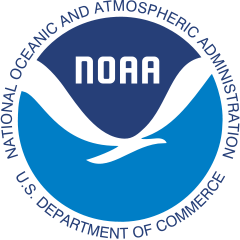Extreme precipitation is among the most destructive natural disasters. Simulating changes in regional extreme precipitation remains challenging, partially limited by the horizontal resolution in climate models. For this study, the authors used an ensemble of high-resolution (25-km) global climate model simulations to study extreme precipitation over the Northeastern United States, where extremes have increased rapidly since the mid-1990s. Read More…
GFDL Research Highlights
One of the most puzzling observed climate events in recent years was the dramatic decline in Antarctic Sea ice extent (SIE) in late 2016. It remains unclear to what extent this low sea ice extent can be attributed to changing ocean conditions. This SIE retreat persisted for several years after 2016, thus becoming a multiyear shift. Read More…
The Indo-Gangetic Plain (IGP), stretching from Pakistan to Bangladesh across Northern India, and home to over 800 million people, experiences among the most elevated concentrations of fine particulate matter (PM2.5) in the world. High local anthropogenic emissions associated with waste and crop residue burning, transportation, industry, and power generation are the primary cause for the poor air quality in the region. Unlike other major population centers in Europe, the United States, and China, air pollution has been worsening in the IGP over the last two decades. Exposure to such high levels of air pollution are estimated to reduce average life expectancy by nearly a decade. Read More…
August 29th, 2022 - A simple conceptual model for the self-sustained multidecadal AMOC variability
Multidecadal variability of Atlantic Meridional Overturning Circulation (AMOC) has been reconstructed by various proxies, simulated in climate models, and linked to multidecadal Arctic salinity variability. However, the mechanisms of the multidecadal AMOC variability and its two-way interaction with the Arctic salinity anomaly, as well as the factors affecting the periods and amplitudes of the multidecadal AMOC variability are not well understood from the theoretical perspective using simple conceptual models. Read More…
Multiple large ensembles of climate simulations are used to explore 21st century climate response to greenhouse gases, including the response to significant reductions in greenhouse gases beginning in 2040. The authors explore the extent to which future climate changes could be reversed by reduced emissions of greenhouse gases. Read More…
Research reveals how pollution control measures in Europe and the United States over the past 40 years led to significantly decreased anthropogenic aerosols. During the same time period, economic and industrial growth in South and East Asia led to increased anthropogenic aerosols in those regions. The impact of these changes suggests effects on both the frequency of global tropical cyclones (hurricanes and typhoons), as well as a shift in the global wind circulation.. Read More…
Ocean acidification (OA) is a consequence of the absorption of anthropogenic carbon emissions and it profoundly impacts marine life. Arctic regions are particularly vulnerable to rapid pH changes due to low ocean buffering capacities and high stratification. This research applied unsupervised machine learning methodology to simulations of surface Arctic acidification using two state-of-the-art coupled climate models. The authors identified four sub-regions whose boundaries are influenced by present-day and projected sea ice patterns. The regional boundaries are consistent between the models and across lower and higher carbon emissions scenarios. Read More…
Potential future changes in the genesis frequency and distribution of tropical cyclones are important for society, yet uncertain. Confidence in model projections largely relies on whether we can physically explain why the models projected such changes. After analyzing climate simulations from multiple models, the authors find that future changes in the patterns and frequency of tropical cyclone genesis are largely governed by dynamic effects—that is, by human-induced changes in the atmospheric circulation. Read More…
April 5th, 2022 - S2S prediction in GFDL SPEAR: MJO diversity and teleconnections
Prediction on weather and seasonal timescales has become routine, but the “subseasonal” time scale of a few weeks has proven difficult. The Madden-Julian oscillation (MJO), a large complex of tropical thunderstorms, is the dominant subseasonal phenomenon over the tropics, and its prediction is critical for subseasonal prediction of tropical cyclones, atmospheric rivers, and other extreme events. Read More…
March 28th, 2022 - Tripling of western US particulate pollution from wildfires in a warming climate
Record-setting fires in the western US over the last decade caused severe air pollution, loss of human life, and property damage. Enhanced drought and increased biomass in a warmer climate may fuel larger and more frequent wildfires in the coming decades. The air quality impact of increased wildfires in a warming climate has often been overlooked in current model projections, owing to the lack of interactive fire emissions of gases and particles responding to climate change in Earth System Model (ESM) projection simulations. Read More…


